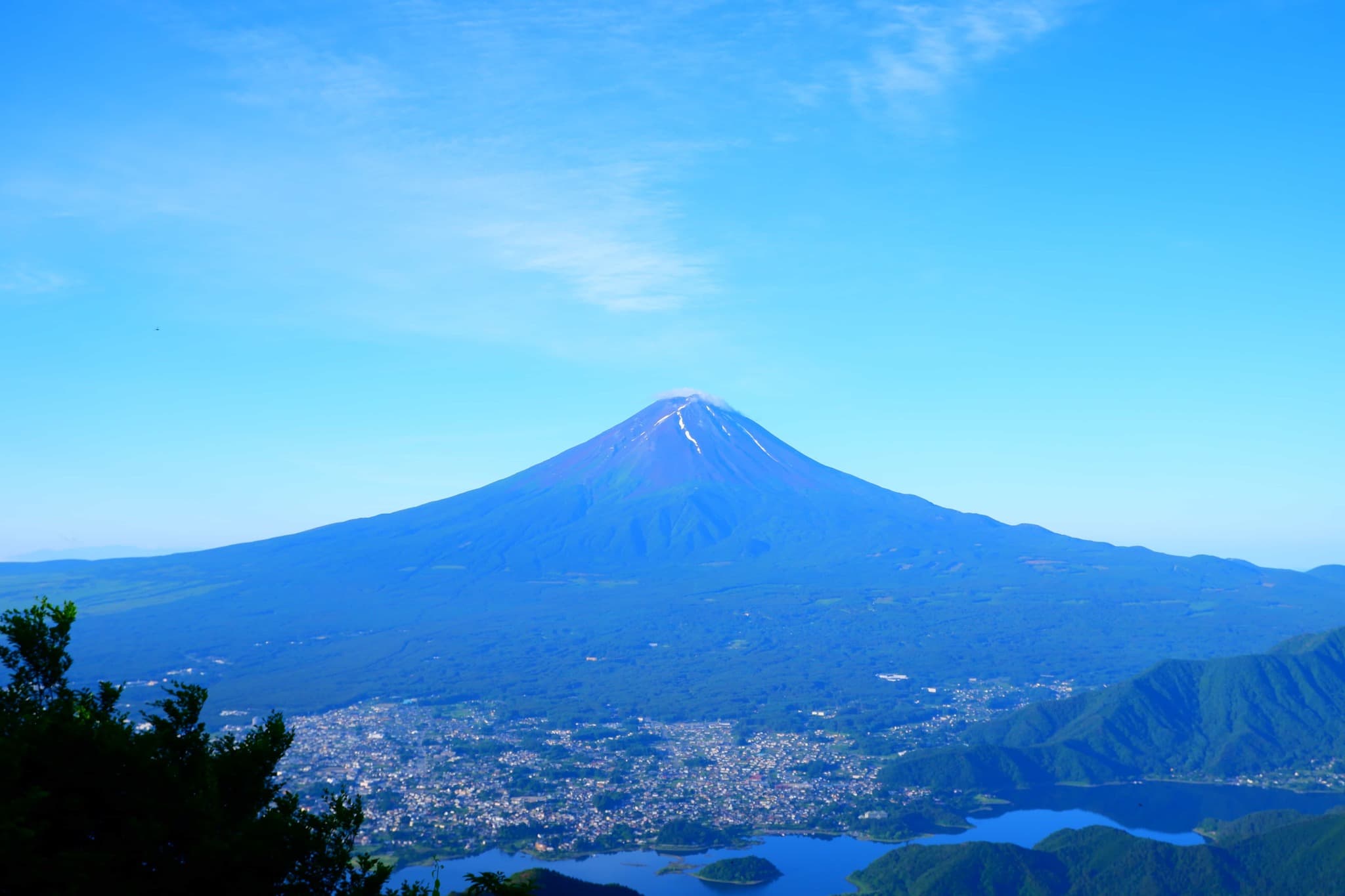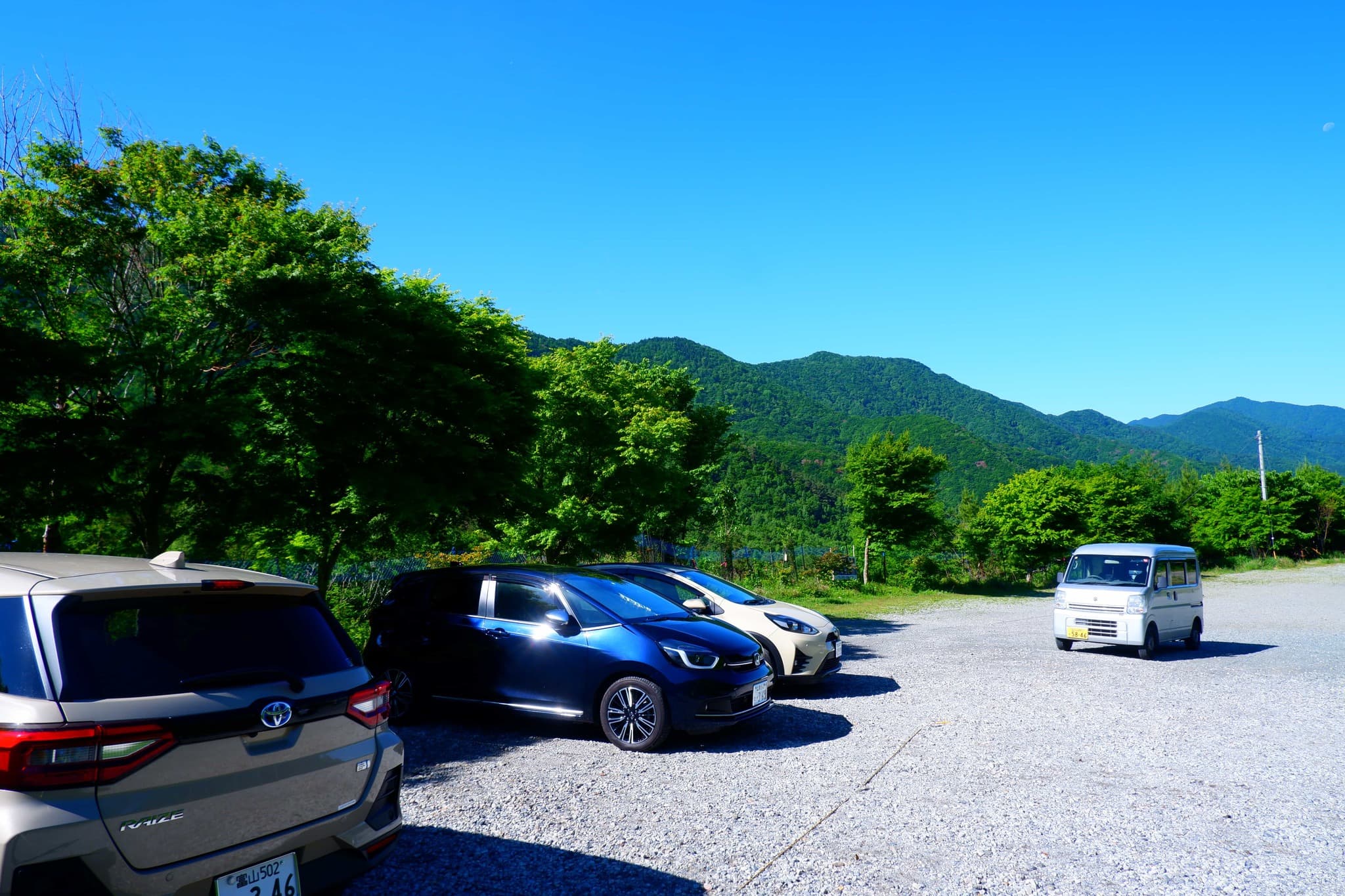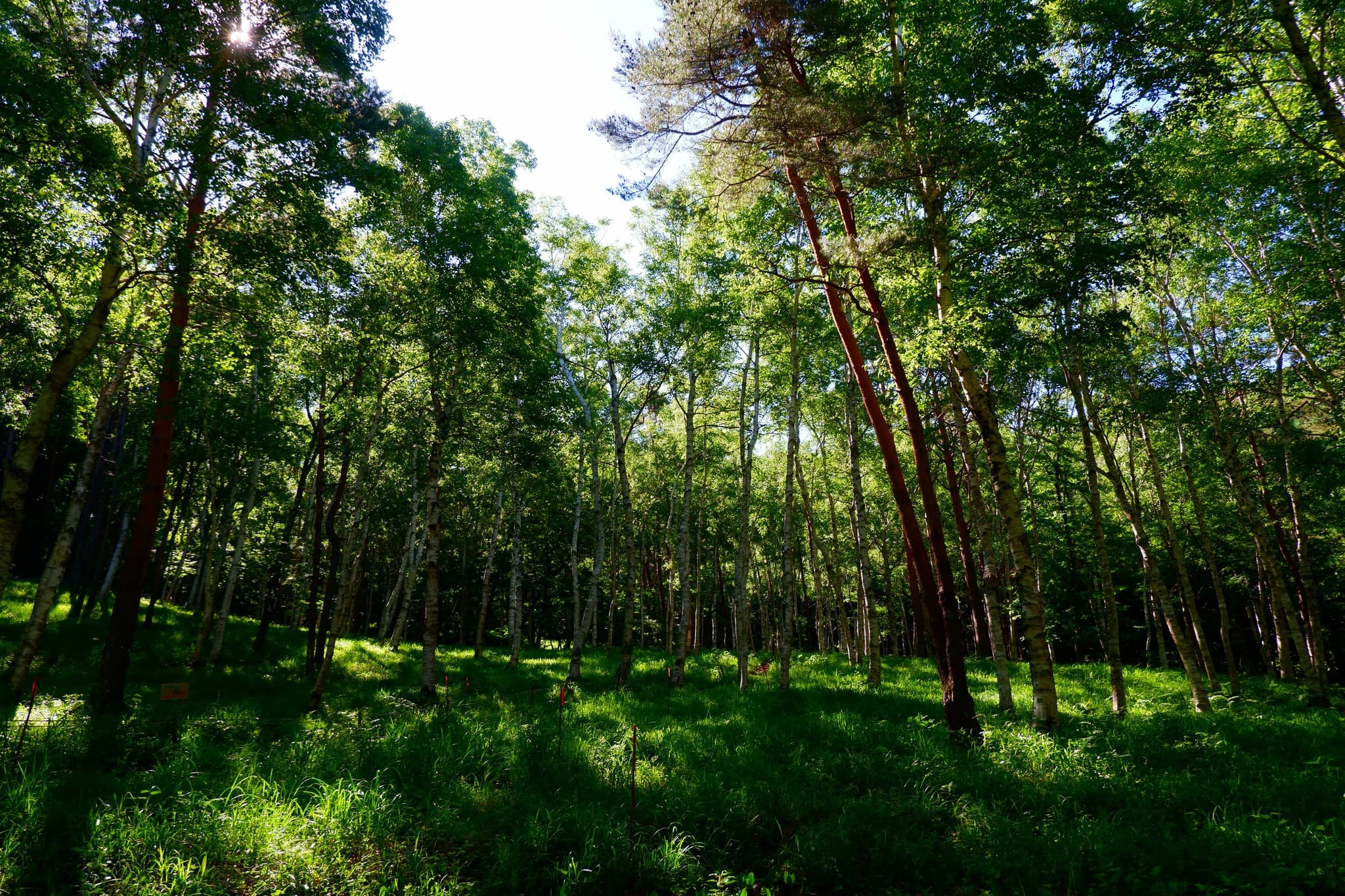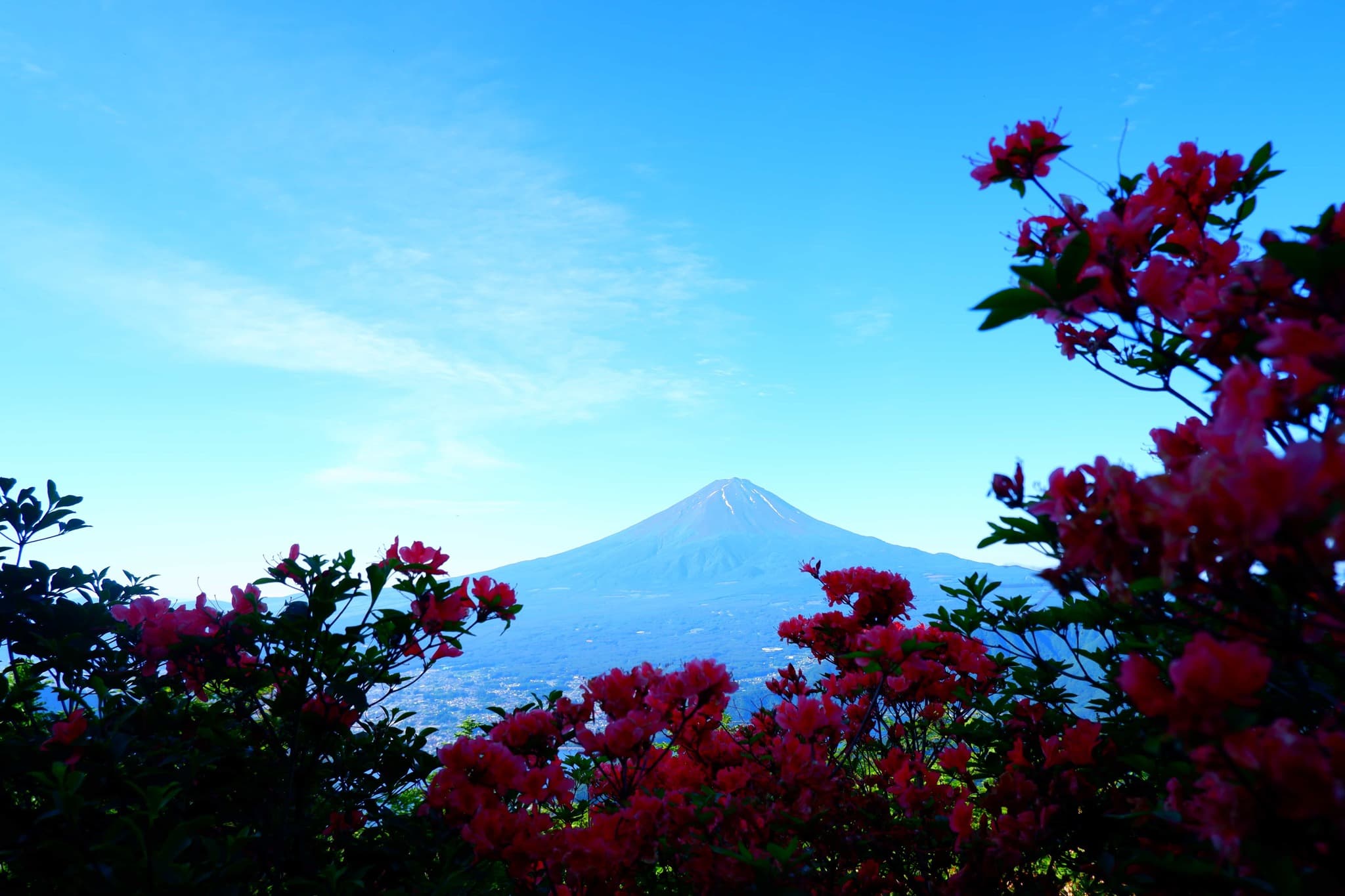Mount Kurodake: Your Secret Seat to Witness Mount Fuji's Most Spectacular Panorama
6/27/2025
25views

What is Mount Misaka Kurodake?
Mount Misaka Kurodake, located on the border between Ashikawa-cho, Fuefuki City, Yamanashi Prefecture, and Fujikawaguchiko-machi, Minamitsuru-gun, boasts an elevation of 1,793m (or 1,792.7m) and is known as the highest peak in the Misaka Mountains.This majestic mountain has been selected as one of the "300 Famous Mountains of Japan" and "100 Famous Mountains of Yamanashi," making it a special destination for hiking enthusiasts.As there are many mountains with the same name "Kurodake" nationwide, it is commonly referred to as "Misaka Kurodake" to avoid confusion.Its name is said to derive from its solid, dark appearance, or from the dark-colored mountain surface and deep green foliage near the summit.
The summit of Mount Misaka Kurodake itself is covered in trees, offering no direct panoramic views.However, just a five-minute walk south from the summit, there is an observation point that offers a magnificent view of Lake Kawaguchiko below, with the majestic Mount Fuji towering beyond.This "Fujimi" (Fuji view) scenery is one of the greatest attractions of climbing Mount Misaka Kurodake, drawing many hikers. This spectacular view, gained by extending your walk slightly after reaching the summit, will deepen your sense of accomplishment from the climb.
Why Should You Climb Mount Misaka Kurodake?
Climbing Mount Misaka Kurodake offers multifaceted attractions that go beyond a mere physical challenge. First and foremost, its greatest appeal lies in the magnificent panoramic view of Mount Fuji embracing Lake Kawaguchiko, which can be seen up close. Mount Fuji, with its ever-changing expressions throughout the seasons, offers new awe with each visit. Furthermore, Mount Misaka Kurodake provides diverse routes suitable for a wide range of hikers, from beginners to experienced climbers. From relatively gentle ridge trails to more challenging traverse courses, you can choose according to your physical strength and experience. This flexibility allows everyone to plan a safe and fulfilling climbing experience.Moreover, this mountain is blessed with rich nature, featuring extensive primeval beech forests and diverse flora and fauna.You can also delve into its historical background, with remnants of the past such as the old Kamakura Kaido road and Misaka Pass, the stage of the "Battle of Kuromagome," scattered throughout.The fusion of natural beauty and historical depth adds another dimension to the climb.And after a tiring climb, there are plenty of "rewards" to soothe your body and mind. The surrounding Fuefuki City, known as the "Village of Hot Springs," offers numerous hot spring facilities where you can refresh yourself in free-flowing hot springs.Additionally, Fuefuki City, the "No. 1 Peach and Grape Producing Region in Japan," has many restaurants where you can savor local cuisine made with abundant local ingredients and Koshu wine, further enhancing the satisfaction of your climb.All these elements combine to make Mount Misaka Kurodake a destination that offers a fulfilling journey for both body and soul, not just a simple climb.
Contents
Detailed Guide to Mount Kurodake Hiking Routes
Main Trailheads and Access Methods
Access to Mount Misaka Kurodake is most commonly and conveniently done by private car. The main trailheads include "Suzuran Community Parking Lot" and "Misaka Tunnel Entrance Parking Space."
The "Suzuran Community Parking Lot" is close to the trailhead and offers free parking for approximately 50 vehicles.It is generally easier to park here, especially outside the lily of the valley blooming season. This parking lot also has restrooms, but they are closed during winter, so visitors during that period should be aware. By private car, it takes about 45 minutes from Isawa-Onsen Station on the JR Chuo Main Line, or about 30 minutes from Fuefuki-Yatsushiro Smart IC on the Chuo Expressway.

The "Misaka Tunnel Entrance Parking Space" is another main trailhead, and from here, it takes approximately 2 hours and 30 minutes to reach the summit via Misaka Pass."Oishi Park," located on the shores of Lake Kawaguchiko, is also used as an alternative starting point, offering magnificent views of Mount Fuji.For public transportation, you can access the "Mitsutoge Iriguchi" bus stop by Fujikyu Bus from Isawa-Onsen Station on the JR Chuo Main Line.It is essential to check the bus schedule and fares in advance on the Fujikyu Bus timetable.However, the route from "Mitsutoge Iriguchi" to Misaka Pass is described as a "hellish zigzag with no views" due to its length, and it includes rough sections with fallen trees and rocks, requiring considerable physical strength and determination.From Kawaguchiko Station on the Fujikyuko Line, it takes about 25 minutes to the "Mitsutoge Tozanguchi" bus stop.Bus operating periods and frequencies may be limited, so it is necessary to check timetables and bus stop information in advance and plan with ample time.Be especially aware that buses from Kawaguchiko may be delayed due to traffic congestion.For access to the Shindo Pass area, a paid shuttle bus to "FUJIYAMA Twin Terrace" operates from "Lily Bell Hutte".This shuttle bus runs daily except Tuesdays from late April to late November and costs 1,800 yen for a round trip.Hiking from Twin Terrace towards Kurodake is also possible, making it an attractive option for those who want to easily access scenic viewpoints without overexerting themselves.
Recommended Routes, Estimated Times, and Difficulty Levels
Mount Misaka Kurodake offers several hiking routes, each with different attractions and difficulty levels. It is important to choose the optimal route according to your physical strength and experience. Beginner-Friendly Route (Loop from Suzuran Community Parking Lot): The route starting from the Suzuran Community Parking Lot features many relatively gentle and flat ridge trails, making it recommended for beginner hikers.The summit can be reached in about 1 hour, but since the summit itself is covered in trees and offers no views, it is recommended to extend your walk to the observation deck beyond.From the observation deck, a magnificent view unfolds, with Mount Fuji majestically towering over Lake Kawaguchiko, and the distant peaks of the Southern Alps visible.The loop course from the observation deck via Suzuran Pass back to the Suzuran Community Parking Lot takes approximately 6 hours and 15 minutes in total, including breaks and photo stops.This route is suitable for those who want to easily experience the spectacular views of Mount Fuji in a relatively short time.

Route from Misaka Pass: The route from the Misaka Tunnel entrance via Misaka Pass to the summit takes approximately 2 hours and 30 minutes.From Misaka Pass to the summit of Kurodake, a comfortable ridge trail continues, allowing for relatively smooth walking.This route can also be combined with other mountains in the Misaka range for a traverse, making it suitable for hikers who want to cover longer distances.Additionally, the route from Mitsutoge Iriguchi bus stop via Old Misaka Pass to the summit of Kurodake takes just under 4 hours to reach the summit.For descent, a course directly down to the shores of Lake Kawaguchiko, taking 2 hours, can also be chosen.Traverse Route to Shakagatake (for Experienced Hikers): The traverse course from Kurodake to Hinatazaka Pass (Donbei Pass), Fukoma-yama, and then Shakagatake is a challenging route for experienced hikers requiring more physical strength and experience.This course involves many ups and downs, and particularly below the summit of Shakagatake, there is a steep rocky section that requires careful navigation.The course time is long, around 7 hours, making it suitable for those who want to enjoy a full-fledged and challenging climb.
Trail Precautions (Dangerous Sections, Landslides, etc.)
To enjoy hiking Mount Misaka Kurodake, prior information gathering and safety considerations are essential. Some routes have sections that require caution.Specifically, the path from the Misaka Tunnel upper junction towards Mitsutoge Iriguchi and the course from Hinoki Shrine to the Shakagatake ridge include sections where the path has collapsed or is severely overgrown to a "disused trail" level.These sections pose a high risk of accidents or injuries for hikers unfamiliar with ravine terrain and should be avoided by beginners.On the trail from Kurodake towards Shakagatake, there is a junction where many hikers mistakenly proceed towards Misaka Pass.It is important to carefully check the signs and proceed towards "Donbei Pass." Additionally, steep slopes and narrow traverse paths are scattered throughout, so it is crucial to pay close attention to your footing and proceed cautiously.Forest roads leading to the hiking trails may be closed due to construction or winter closures.It is essential to always check the latest information and understand the road conditions before departure.Furthermore, numerous bear sightings have been reported near Mitsutoge Iriguchi, so be sure to take appropriate bear precautions, such as carrying a bear bell.
Main Hiking Routes, Estimated Times, and Difficulty Levels
Route Name (Start/End Point) | Estimated Time | Difficulty | Main Highlights |
Suzuran Community Parking Lot Loop | Approx. 6 hours 15 minutes | Beginner-friendly | Mount Fuji observation deck, Suzuran Community |
Misaka Tunnel Entrance ~ Summit | Approx. 2 hours 30 minutes | Beginner to Intermediate | Comfortable ridge trail from Misaka Pass |
Mitsutoge Iriguchi ~ Summit (Traverse) | Just under 4 hours (to summit) | Intermediate | Old Misaka Pass, descent to Lake Kawaguchiko shore |
Kurodake ~ Shakagatake Traverse | Approx. 7 hours | Experienced Hikers | Steep rocky sections, ups and downs, Shakagatake |
Access Information (Public Transportation / Private Car)
Trailhead Name | Private Car Access | Public Transportation Access | Notes |
Suzuran Community Parking Lot | Approx. 30 minutes from Chuo Expressway Fuefuki-Yatsushiro Smart IC, 50 free parking spots, restrooms available (closed in winter) | Approx. 45 minutes by car from JR Isawa-Onsen Station | Crowded during lily of the valley season |
Misaka Tunnel Entrance Parking Space | North side of Lake Kawaguchiko, along National Route 137 | Approx. 25 minutes by bus to "Mitsutoge Tozanguchi" stop from Fujikyuko Line Kawaguchiko Station | Buses from Kawaguchiko may be delayed due to traffic |
Oishi Park | Located on the shore of Lake Kawaguchiko | Bus from Fujikyuko Line Kawaguchiko Station | Beautiful view of Mount Fuji over Lake Kawaguchiko |
FUJIYAMA Twin Terrace | Use Lily Bell Hutte parking | Paid shuttle bus from Lily Bell Hutte (1,800 yen round trip, late April to late November, closed Tuesdays) | Easy access to scenic viewpoints |
Enjoying Each Season and Important Considerations
Mount Kurodake's Seasonal Expressions
Mount Misaka Kurodake dramatically changes its appearance throughout the four seasons, offering hikers different charms with each visit. In particular, from the observation deck on the south side, a short walk from the summit, you can enjoy the magnificent view of Mount Fuji and Lake Kawaguchiko, which changes with the seasons. Spring (May to early June) is when new greenery sprouts on the mountains, a season full of vitality. A special highlight of Mount Misaka Kurodake during this time is the Suzuran Community. Typically from mid-May to early June, delicate Japanese lilies of the valley bloom across the area, coloring the hiking trails.Hiking during this period, while admiring the flowers, is particularly pleasant, and many visitors come specifically for this natural event. The lily of the valley blooming season is especially popular, and the Suzuran Community parking lot tends to get crowded, so it's good to consider this when planning.Summer (July to August) offers the great appeal of forest bathing, walking through the lush green primeval beech forests.The cool shade continues, allowing for comfortable hiking as a summer retreat. You may also have the opportunity to encounter the mystery of nature, as beautiful migratory butterflies like the Chestnut Tiger can be observed.In Autumn (late October to November), the entire Misaka Mountain Range is dyed in vibrant autumn colors, creating a beautiful landscape of brocade autumn leaves. The contrast between Mount Fuji and the autumn foliage is breathtaking, and many photographers and hikers eagerly await visits during this season.And in Winter (December to March), despite the snowfall, on clear days, you can view an even more majestic Mount Fuji in the crisp, clear air.Mount Fuji, adorned with a blanket of snow, exhibits a solemn and sacred beauty different from other seasons. However, snowfall tends to be deep during this period, with maximum snow depths reaching 24cm in January and February.Winter mountaineering requires appropriate gear, thorough preparation, and utmost caution.

Seasonal Weather Conditions and Recommended Clothing/Equipment
Near the summit of Mount Misaka Kurodake, weather conditions differ significantly from the lowlands, so it is essential to check the latest weather forecast and prepare appropriate clothing and equipment before climbing.Regarding snowfall information, past data indicates average maximum snow depths of 5cm in December, 24cm in January, 22cm in February, and 11cm in March.If planning a winter climb, you should be aware that specialized equipment for snowy conditions, such as crampons and snowshoes, will be necessary.Caution during bad weather is also important. If heavy rain, heavy snow, strong winds, or other severe weather is expected, climbing should be avoided for safety.Even after the weather improves, careful planning and judgment are required, as there may be increased water levels in streams or trail collapses.In the mountainous areas of Yamanashi Prefecture, weather tends to change from west to east, so checking the weather forecast for neighboring municipalities will help in more accurate weather assessment.For clothing and equipment, the following basic gear is recommended regardless of the season :
Hiking boots: High-cut boots that protect the ankles enhance foot stability and reduce the risk of injury.
Clothing: Wear moisture-wicking and quick-drying base layers to absorb sweat quickly, and layer with insulating mid-layers for easy temperature regulation. Additionally, waterproof and breathable rainwear (two-piece set) is essential to protect against sudden rain and wind.
Warm clothing: Due to the high altitude, it can feel chilly near the summit even in summer. Always carry warm clothing such as fleece, regardless of the season.
Other: A hat, gloves, backpack, sufficient food and water, headlamp, map, and compass are indispensable items for a safe climb.
Especially in winter, thorough cold weather preparation is essential to prevent frostbite, including waterproof gloves, thick socks, and highly insulating inner, mid, and outer layers.Regarding water sources on the trail, the provided information does not explicitly state the presence of specific water sources on the Mount Kurodake hiking trails in Yamanashi. Therefore, it is strongly recommended to bring a sufficient amount of drinking water in advance.
Seasonal Clothing and Equipment Guide
Season | Temperature Trend | Recommended Clothing (Layering) | Essential Equipment | Special Notes |
Spring (March-May) | May drop below freezing even during the day. Residual snow (until early July) | Outerwear (waterproof recommended), removable mid-layers, quick-drying base layer | High-cut hiking boots, hat, gloves, rain gear, warm clothing, water | New greenery, best time for lily of the valley (mid-May to early June) |
Summer (June-August) | Cooler than urban areas. Wind can lower perceived temperature | Removable outerwear, quick-drying base layer, thin mid-layer | High-cut hiking boots, hat, gloves, rain gear, warm clothing (fleece, etc.), water, sunglasses | Forest bathing, observation of Chestnut Tiger butterflies |
Autumn (September-November) | May drop below freezing after mid-August | Windproof rainwear, removable mid-layers, thick warm clothing | High-cut hiking boots, hat, gloves, rain gear, warm clothing (fleece, etc.), water | Best time for autumn leaves (late October to November) |
Winter (December-February) | May drop to -20℃ to -30℃ | Thick inner layers, mid-layers, waterproof outer layers, thick socks for frostbite prevention | High-cut hiking boots, waterproof gloves, crampons, snowshoes, headlamp, insulated water bottle | Deep snow (max 24cm in Jan) , winter mountaineering gear essential, clear views of Fuji |
Preparation and Mindset for Safe Hiking
Essential Equipment List
To ensure a safe climb on Mount Misaka Kurodake, preparing appropriate equipment is essential.For basic equipment, high-cut hiking boots are recommended to protect your feet.For clothing, layering moisture-wicking and quick-drying base layers, insulating mid-layers to maintain body temperature, and waterproof and breathable rainwear (two-piece set) to protect against rain and wind allows for flexible adaptation to weather changes.Also, in high-altitude mountains, it can feel chilly even in summer, so warm clothing such as fleece is essential regardless of the season.Additionally, a hat to protect your head from sun and cold, gloves to protect your hands, a backpack for carrying belongings, food as an energy source during activity, and sufficient water to prevent dehydration are all indispensable items.To prepare for emergencies, a headlamp to ensure visibility at night or in bad weather, and a map and compass to confirm your current location are also important pieces of equipment.Additional equipment depending on the season should also be considered. Especially in winter, crampons and snowshoes are essential winter mountaineering equipment to cope with snow and ice.Furthermore, bear sightings have been reported in some areas around Mount Misaka Kurodake, such as near Mitsutoge Iriguchi.Therefore, it is necessary to take appropriate bear precautions, such as carrying a bear bell.Preparation for emergency response should not be neglected. A dead mobile phone battery can lead to a critical situation in an emergency. Therefore, it is important to carry a large mobile battery to ensure constant charging.It is also recommended to use GPS-enabled devices or apps to ascertain your current location even in areas without mobile signal.Furthermore, considering alternative communication methods such as amateur radio or satellite phones in situations where mobile phone signals are unavailable can enhance safety.
Emergency Contacts and Mountain Rescue System
In the event of an accident or getting lost during a climb, prompt action can save lives. In an emergency, the top priority is to call 119 (fire/ambulance) or 110 (police) without hesitation.As a specialized department for mountain rescue in Yamanashi Prefecture, there is the Yamanashi Prefectural Police Headquarters Mountain Life Safety Department Regional Affairs Division. The main phone number is 055-235-2121.It is advisable to keep these contact numbers handy in case of an emergency.Even if an accident occurs in an area without mobile phone signal, it is important to be prepared to record the precise latitude and longitude using GPS and move to an area with signal to make a call to emergency services.Furthermore, in the mountainous areas around Mount Fuji where Mount Misaka Kurodake is located, "Mount Fuji Eruption Evacuation Route Maps" are disseminated in preparation for a potential eruption.When planning a climb, it is wise to consider such natural disaster risks and check relevant information.
Importance of Hiking Plan and Submission of Climbing Notification
For safe hiking, planning your climb and submitting a climbing notification are extremely important. Create a realistic plan with ample time, and select your course carefully, taking into account your physical strength, experience, and the latest weather conditions.Fuefuki City recommends using the online climbing plan system "Compass".By registering your climbing plan in advance with this system, in the event of an emergency, Yamanashi Prefecture and the prefectural police can share your information, which helps in prompt search and rescue operations.A smartphone app is also available, making it easy to submit climbing notifications for day hikes and other activities.This system functions as part of the administrative efforts to supplement individual safety measures and provide a broader safety net.Trail conditions can change due to seasons, heavy rain, falling rocks, or construction.Before departure, always research the latest information and confirm that there are no trail closures or dangerous sections to avoid unexpected difficulties.Finally, awareness of environmental protection is also important. Always take any trash generated during your hike back with you and do not leave it in nature.Also, to prevent fires, avoid bonfires in areas with abundant dry grass, and if you smoke, always use a portable ashtray and never discard cigarette butts.These actions are the responsibility of hikers to pass on beautiful nature to future generations and form the foundation for sustainable tourism.
Post-Hike Rewards: Nearby Hot Springs and Restaurants
Hot Springs to Soothe Body and Mind
After completing your hike on Mount Misaka Kurodake, the perfect way to soothe your tired body and mind is to visit the hot spring facilities scattered in the surrounding area. Fuefuki City is also known as the "Village of Hot Springs," and particularly Isawa Onsen and Kasugai Onsen boast abundant hot spring water, available for day trips or at accommodation facilities.Near Isawa-cho, Fuefuki City, close to Kurodake, there are accommodation facilities where you can enjoy forest hot spring baths with free-flowing hot spring water, allowing you to slowly recover from the fatigue of your hike.Soaking in a hot spring is not just about rest; it promotes muscle recovery, provides mental and physical relaxation, and revitalizes you for activities on subsequent days.Additionally, there are several hot spring facilities near Ashikawa-cho, close to the trailhead, that offer day-trip bathing. For example, "Miharashi no Oka Mitama no Yu" in Ichikawamisato-cho, Nishiyatsushiro-gun, is about 2.09km from Ashikawa Station and is known as a popular hot spring with spectacular views, as its name suggests."Yamanami no Yu" in Minami-Alps City is also relatively close, about 2.64km from Ashikawa Station, and is another option.The combination of hiking and hot springs is very compatible with Japanese tourism, promoting stay-type tourism throughout the region and functioning as a tourism model that brings multifaceted economic benefits.
Restaurants to Savor Local Flavors
Another pleasure after hiking is to enjoy meals that make the most of the rich local ingredients. Fuefuki City is known as the "No. 1 Peach and Grape Producing Region in Japan," with vast fruit orchards, and you can enjoy a variety of dishes that utilize these blessings.Near the Kurodake trailhead, in Kamiashikawa, Ashikawa-cho, Fuefuki City, there is "Oshokujidokoro Kawazashiki Suzuran".Here, you can savor local cuisine made with abundant local ingredients. However, its operating period is limited from April 1st to November 19th, and it is only open on weekends and holidays (11:00 AM to 4:00 PM), so it is important to check the operating days and hours in advance when planning your visit.If you extend your trip a little further to Koshu City, you can have a more refined dining experience at "Kaiseki Maruki" within "Fuefukigawa Onsen Zabou".Here, you can enjoy kaiseki cuisine made with mountain village ingredients and pairings with Koshu wine, a proud product of Yamanashi Prefecture.Around Lake Kawaguchiko, as indicated in the model course, you can enjoy local specialties such as mushroom hoto, a regional dish.These dining establishments further enrich your hiking memories and provide an opportunity to deeply experience the local culture and culinary delights.
Conclusion
Mount Misaka Kurodake, located in Fuefuki City, Yamanashi Prefecture, is a mountain with special appeal for hiking enthusiasts, serving as the highest peak in the Misaka Mountains and one of Japan's 300 Famous Mountains and Yamanashi's 100 Famous Mountains. While the summit view is obstructed by trees, a mere five-minute walk reveals a magnificent panorama of Mount Fuji overlooking Lake Kawaguchiko, making this breathtaking scenery a major highlight of the climb.This mountain offers diverse options, from relatively gentle beginner-friendly routes to challenging traverses for experienced hikers, such as the route to Shakagatake. This allows hikers of various experience levels to plan their trips according to their physical abilities and objectives. In particular, the Suzuran Community is adorned with delicate flowers in spring, and the entire mountain is painted in vibrant autumn colors in fall, captivating visitors with its seasonal beauty.However, to safely enjoy its charm, thorough preparation and an appropriate mindset are essential. It is crucial to understand the seasonal weather conditions and prepare suitable clothing and equipment to cope with temperature changes and snowfall. Especially, as some trails have collapsed sections or rough paths, utmost care must be taken in selecting routes, and the latest information should always be checked. Furthermore, in areas where bear sightings have been reported, appropriate measures such as carrying a bear bell are necessary. Utilizing the online climbing plan system "Compass" is highly recommended, as it can facilitate prompt rescue operations in case of an emergency.After completing your hike, you can relieve your fatigue in Fuefuki City's renowned "Village of Hot Springs" and indulge in local cuisine made with the region's abundant blessings and Koshu wine, ensuring a fulfilling experience for both body and mind. Mount Misaka Kurodake is not just a mountain to climb; it is a place where majestic nature, history, and warm local hospitality converge to create unforgettable travel memories.